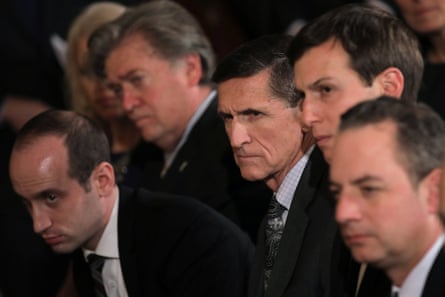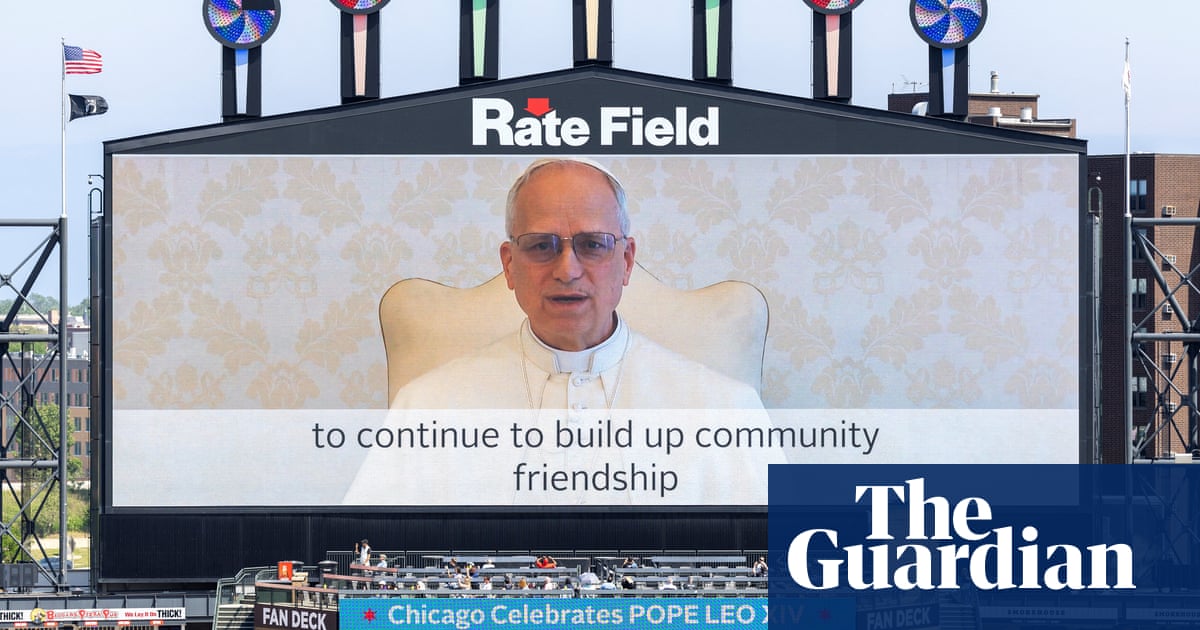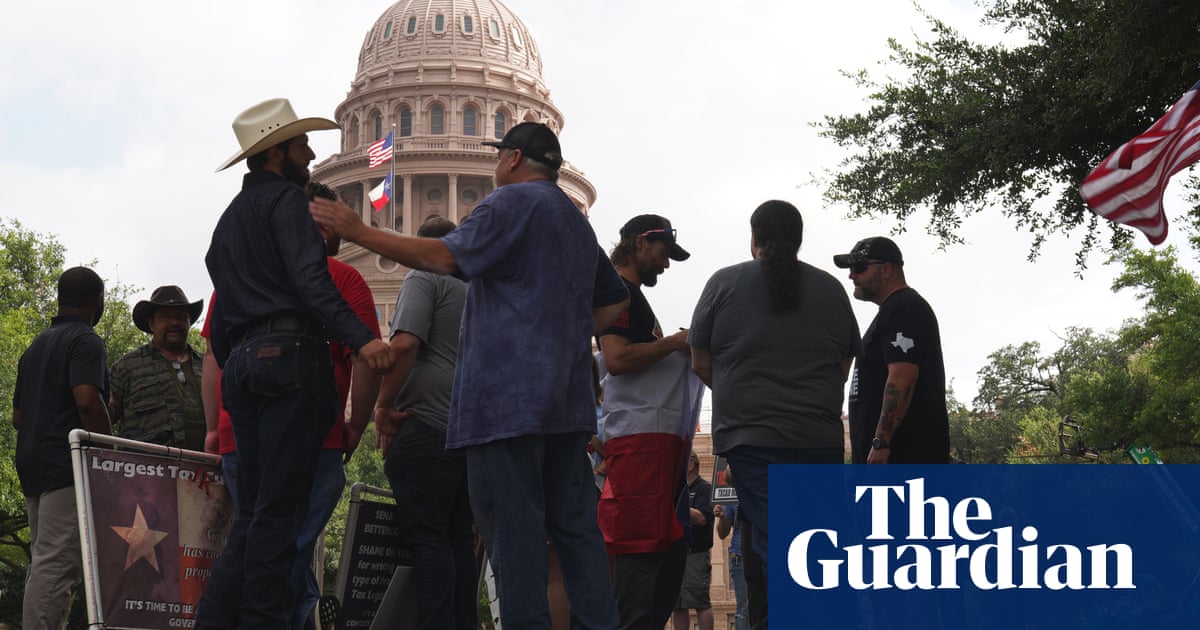With Los Angeles convulsed by confrontation between pro-migrant protesters and military units dispatched by Donald Trump, no figure apart from the president has loomed larger than Stephen Miller.
As the man in the Oval Office, it is Trump who has absorbed the accusations of authoritarianism for usurping the powers of California’s government after deploying 4,000 national guard troops and 700 active marines on to the streets of a city that is home to more undocumented immigrants than any other in the US.
Behind the scenes, however, this has been the apogee of Miller’s power – and an episode that illuminated his power in a White House where his influence far outstrips his misleadingly modest title of deputy chief of staff.
Miller, 39, may have been the true catalyst for the volatile scenes that played out over several days in the city of his birth.
As the long-term architect of Trump’s years-long effort to reinvent US immigration policy, he has pressed Immigration and Customs Enforcement (Ice) agents to intensify efforts to arrest migrants as deportation figures fell far short of pre-election promises.
At a meeting at Ice’s Washington headquarters last month, Miller ordered them to skip the usual practice of compiling lists of suspected illegal migrants and instead target Home Depot, where day laborers gather for short-term hire, and 7-Eleven stores, to carry out mass arrests, the Wall Street Journal reported.
Ice would aim for a minimum of 3,000 arrests a day, he told Fox News – a figure exceeding previous estimates, based on assumptions that those with criminal records would be prioritised. It also seemed to raise the risk of mistakes and wrongful arrests.
Accordingly, Ice has drastically stepped up its arrest rate – and broadened the profile of those targeted.
The results have been plain to see. As demonstrators took to the streets, Miller promptly raised the stakes by accusing them of an “insurrection”.
Amid the hullabaloo and expressions of outrage, Miller may allowed himself a quiet smile of satisfaction over sticking it to the city of his birth – in many ways emblematic of the progressive cultural trends despised by Trump’s “make America great again” (Maga) followers but a place where his own hardline anti-immigrant views had long provoked derision.
The son of affluent Jewish parents, Miller’s evolution into a race-baiting provocateur took shape in the upscale suburb of Santa Monica, where he gained notoriety as an incendiary agitator at the eponymous local high school.
Video footage purportedly from the period and circulated on social media shows a bearded Miller stridently voicing his disdainful view of school janitorial staff
“Am I the only one who is sick and tired of being told to pick up my trash when we have plenty of janitors who are paid to do this,” he shouts into a microphone.
The gross statement seems to have been representative of a broader canvas of toxic ideas, with racism at its core.
In Hatemonger: Stephen Miller, Donald Trump, and the White Nationalist Agenda, to date the only biography published on Miller, author Jean Guerrero recounts one episode from the future political operative’s adolescence, when he suddenly ditched a close friend, Jason Islas, on the grounds of his ethnicity.
“The conversation was remarkably calm,” Islas, a Mexican American, is quoted saying. “He expressed hatred for me in a calm, cool, matter-of-fact way.”
An article he wrote as a 16-year-old for a local website expresses contempt for fellow students of Hispanic origin.
“When I entered Santa Monica High School in ninth grade, I noticed a number of students lacked basic English skills,” Miller wrote on the Surfsantamonica site. “There are usually very few, if any, Hispanic students in my honors classes, despite the large number of Hispanic students that attend our school.”
The school, he added, was one where “Osama bin Laden would feel very welcome” – a view reflecting the then recentness of the 9/11 attacks by al-Qaida and also Miller’s increasing focus on Muslims.
Miller’s indulgence in far-right ideas continued during his college years at Duke University in North Carolina, where he associated with white nationalist thinkers and groups.
According to the Southern Poverty Law Center, he worked with the David Horowitz Freedom Center, which it defined as a “an anti-Muslim hate group”, and also with Richard Spencer, a white nationalist leader who popularized the term “alt-right” to describe groups that defined themselves through a white racial identity.

After graduating, Miller moved to Washington to work in Congress, serving first as a press secretary to Michele Bachmann, then a Republican representative for Minnesota, before moving to work for Jeff Sessions, at the time a rightwing Alabama senator who later became Trump’s first attorney general.
It was in the latter role that his reputation as an avatar of extreme anti-immigrant agitprop became established. In 2013, helped by Miller, Sessions torpedoed a bipartisan piece of legislation that was intended to pave the way for immigration for undocumented migrants.
To help sink the bill, Miller used Breitbart News, a rightwing website then headed by Steve Bannon. It would prove to be a fateful connection.
The Breitbert connection also shone further light on Miller’s views on race and immigration, as revealed in emails he sent to editors and reporters.
They showed a preoccupation with the 1924 Immigration Act, signed by President Calvin Coolidge, which severely restricted immigration to the US from certain parts of the world on what observers say were racial and eugenics grounds. Hitler subsequently praised the legislation as a model for Germany in Mein Kampf.
After Trump launched his presidential campaign in 2015 - creating scandalizing headlines by demonizing Mexican immigrants as “drug dealers, criminals and rapists”, Miller took a leave of absence from Sessions’ Senate office to work for him.
On the recommendation of Bannon, by then Trump’s campaign chief, he was installed as a speech writer, chiefly because of his focus on immigration, which had become the candidate’s own signature issue.
It enabled Miller to showcase his ability to channel Trump’s inner self. The pair have politically inseparable ever since.
Miller wrote Trump’s dystopian “American carnage” speech for his first inauguration in January 2017. As a senior policy adviser in the first Trump administration, it was Miller who was behind some of its most notorious policy initiatives. These included the so-called “Muslim ban” on travellers from seven majority-Muslim countries and the practice of separating migrant children from their parents at the southern border.
His growing notoriety as an anti-immigration extremist drew criticism from his own relatives. In 2018, his maternal uncle, David Glosser, branded him a “hypocrite” for ignoring the memory of his ancestors, who fled antisemitic pogroms in tsarist Russia.
“I have watched with dismay and increasing horror as my nephew, an educated man who is well aware of his heritage, has become the architect of immigration policies that repudiate the very foundation of our family’s life in this country,” Glosser, a retired neuropsychologist, wrote in Politico.
Miller cared little for such sentimentality.
After Trump’s defeat to Joe Biden in the 2020 presidential election, Miller stuck with the former president – even while his political future initially looked doomed in the aftermath of the 6 January 2021 attack by his supporters on the US Capitol.
Consequently, he grew ever more powerful in Trump’s inner circle. He may have earned extra kudos by declining to exploit their relationship to win lucrative consulting contracts, instead setting up a non-profit, the America First Legal foundation.
Meanwhile, he immersed himself in studying how to overcome the hurdles that stymied Trump’s agenda during his first presidency.
The outcome has been apparent in the blizzard of executive orders druing the restored president’s first months back in the White House. Miller purposely sought to “flood the zone” in a manner that would overwhelm the capacity of the courts – or the media – to respond.
No order was more quintessentially Miller’s than that issued on the day of Trump’s second inauguration on 20 January, which attempted to cancel birthright citizenship for children born to undocumented immigrants. The order was challenged in the courts and is now with the supreme court after the administration challenged the ability of lower courts to issue nationwide injunctions supporting a right that is guaranteed in the US constitution.
Miller’s anti-immigrant zeal has at times exceeded even that of Trump. According to the New York Times, the president told a campaign meeting last year that if it was up to Miller, there would only be 100 million people living in the US – and all of them would look like Miller.
The bond between the two men has grown to such an extent that Miller has been dubbed “the president’s id” in some circles.
“He has been for a while. It’s just now he has the leverage and power to fully effectuate it,” an unnamed former Trump adviser told NBC. Others have called him “the most consequential” White House official since Dick Cheney, who exercised vast influence as vice-president under George W Bush.
Critics cast Miller as the root of all evil in Trump’s White House. “Stephen Miller is responsible for all the bad things happening in the United States,” NBC quoted Ben Ray Luján, a Democratic senator for New Mexico, as saying.
Miller’s exalted place at Trump’s side was illustrated during the recent Signalgate episode – as revealed by the Atlantic, whose editor, Jeffrey Goldberg, was inadvertently invited into a government chat group to discuss airstrikes on Houthi militants in Yemen, whose missile attacks on Israel threatened Suez canal shipping routes.
When JD Vance questioned the strikes – asking whether Trump “is aware how inconsistent this is with his message on Europe” – Miller unambiguously slapped the vice-president down.
“As I heard it, the president was clear: green light,” Miller said, according to the transcript.
The clearest testimony to Miller’s status has come from Trump himself. Asked by Kristen Welker, the moderator of NBC’s Meet the Press, about speculation that Miller might become national security adviser, a usually influential White House post currently filled, albeit temporarily, by the secretary of state, Marco Rubio, after the previous incumbent, Mike Waltz, was fired.
“Stephen is much higher on the totem pole than that,” Trump replied.
The result is that Miller’s presence is detectable in all policy areas, including at the state department, where he succeeded in having his ally, Christopher Landau, installed as Rubio’s deputy.
The goal is to control the flow of foreigners entering the United States, insiders have told the Guardian.
At the state department, Landau has become an important liaison to officials in the consular affairs section, which has been put under the leadership of a conservative coterie of diplomats and reoriented toward policing migration.
Officials from the state department have joined FBI agents on recent Ice raids aimed at tracking down unregistered migrants.
Tara Setmayer, a former Republican communications director on Capitol Hill, laments that Miller’s rising star means he can “use the powers of the federal government to unleash his fascist worldview”.
“[That view] has now been transformed into the main political policy and aim of Donald Trump’s presidency,” said Setmayer, who now heads the Seneca Project, a women-led political action committee.
“The demagoguery of immigration has long been at the centre of Donald Trump’s political rise, and Stephen Miller’s desire to make America whiter and less diverse, married with the power of the presidency without guardrails, is incredibly dangerous and should concern every American who believes in the rule of law.”
Andrew Roth and David Smith contributed reporting

 German (DE)
German (DE)  English (US)
English (US)  Spanish (ES)
Spanish (ES)  French (FR)
French (FR)  Hindi (IN)
Hindi (IN)  Italian (IT)
Italian (IT)  Russian (RU)
Russian (RU)  8 hours ago
8 hours ago
























Comments